Easy 5-Minute Banana Hemp Oatmeal Fingers for Baby Led Weaning
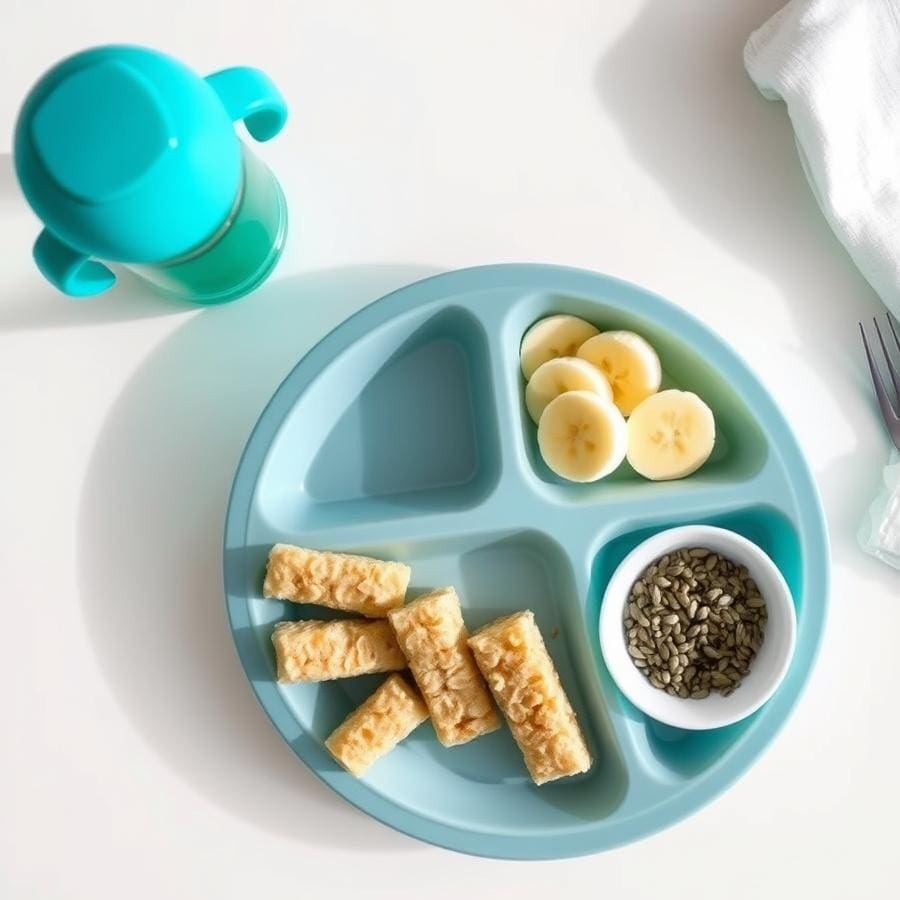
If you’re looking for a fast, budget-friendly first food your baby can grasp and gum, these Banana Hemp Oatmeal Fingers are a parent favorite. They cook in minutes, are naturally sweet from banana, and firm up into easy-to-hold strips after a brief rest.
As a dietitian, I love that they offer whole grains, healthy fats, and a gentle texture that supports self-feeding. Always supervise your baby while eating and talk with your pediatrician before introducing new foods, especially common allergens.
- Why parents love these oatmeal fingers
- Are oatmeal fingers good for babies? The nutrition basics
- Ingredient notes and smart substitutions
- 5-minute recipe how-to
- Texture and safety tips from a dietitian
- How to store, freeze, and reheat
- Simple variations your baby might love
- FAQ quick answers
- Nutrition snapshot per baby serving
- Conclusion
Why parents love these oatmeal fingers
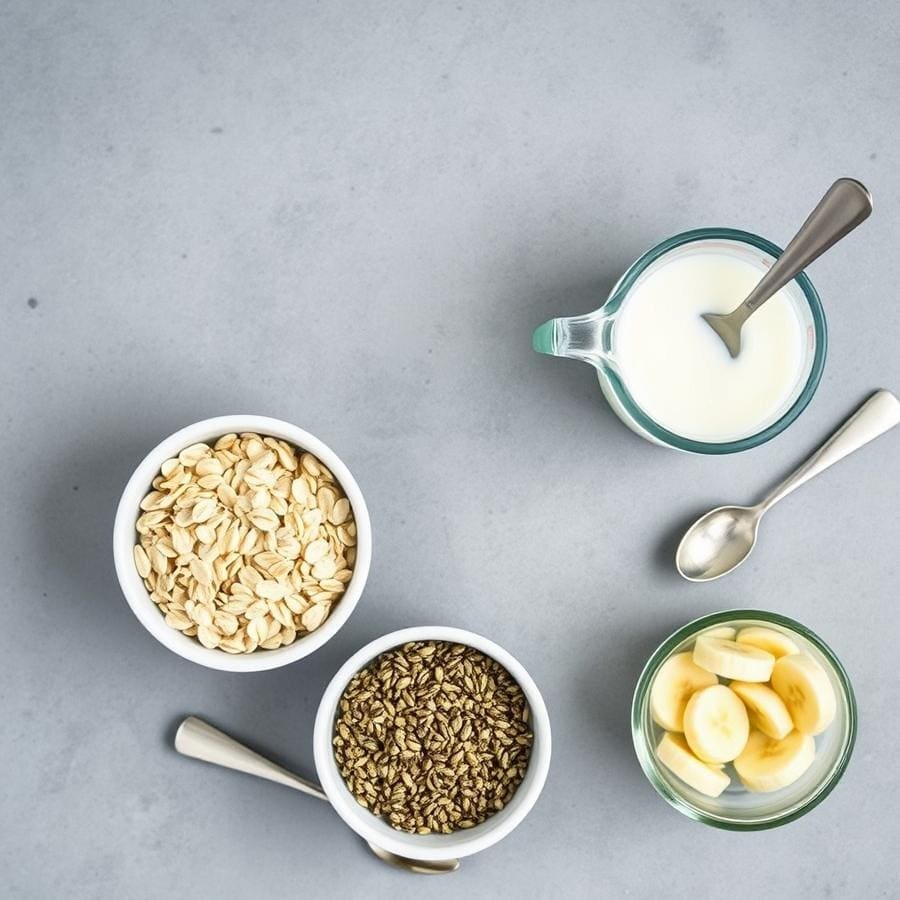
- Ready in about 5 minutes with pantry staples
- Soft, grabbable texture that holds together after a short rest
- No added sugar or salt; naturally sweet from banana
- Nutritious combo of whole-grain oats, omega-3–rich hemp seeds, and calcium-fortified milk alternative
- Customizable for allergens and preferences
- Works for baby-led weaning and spoon-fed babies transitioning to finger foods
- Freezer-friendly for quick breakfasts and snacks
Are oatmeal fingers good for babies? The nutrition basics
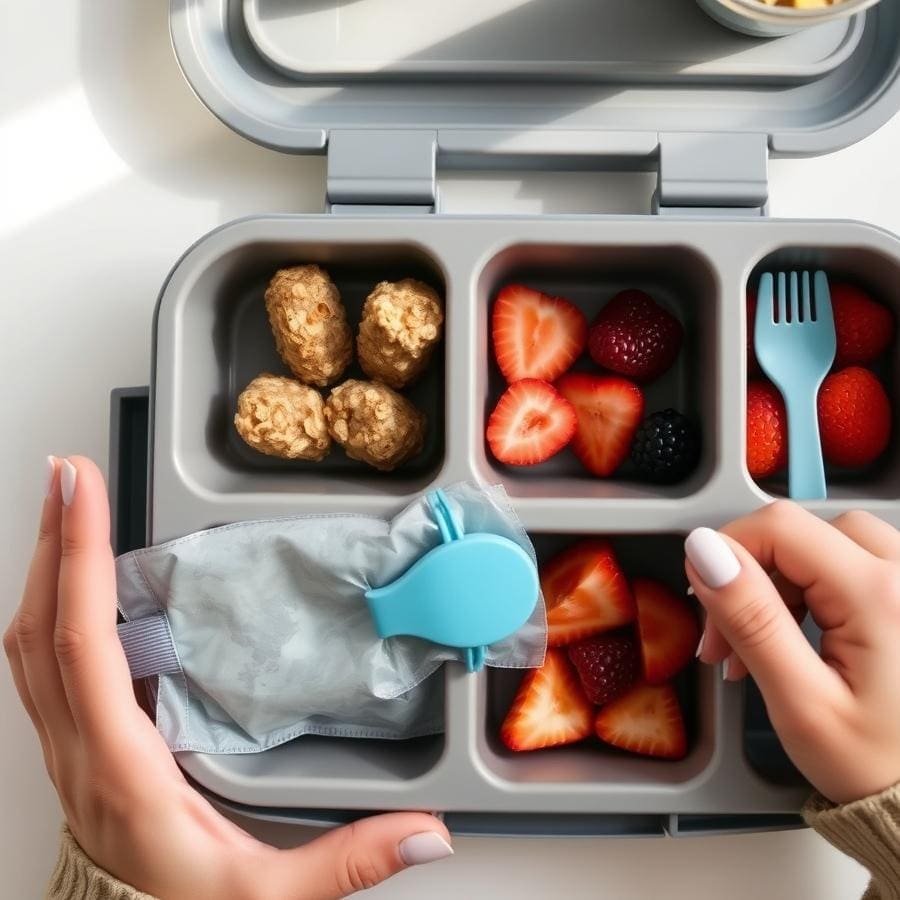
Oatmeal fingers can be a nourishing first finger food when your baby shows readiness signs (around 6 months). Here’s why this combo works:
- Oats: Provide complex carbohydrates and fiber, including well-researched beta-glucan. They are gentle on tiny tummies and can contribute iron, especially if using iron-fortified oats or adding infant cereal.
- Banana: Adds potassium and natural sweetness without added sugar; easy to mash and helps the mixture bind.
- Hemp seeds: Soft, tender seeds that bring plant protein and omega-3 ALA fats that support overall growth, as highlighted in research on hempseed’s nutritional value.
- Fortified milk alternative or formula: Adds moisture and, when fortified, can contribute calcium and vitamin D.
For babies under 12 months, rely on breastmilk or formula as the primary drink; small amounts of cow’s milk or fortified plant milk are acceptable in recipes but should not replace breastmilk or formula as a beverage. Safety note: Always serve soft textures you can smush easily between your thumb and forefinger. Sit baby upright, and avoid added sugars and excess salt in the first year.
Ingredient notes and smart substitutions

Serves: 1 baby portion
- Banana: Use a ripe banana (freckles = sweeter and softer). If banana isn’t tolerated, try mashed pear, cooked mashed apple, or mashed berries.
- Oats: Quick oats create the best cohesion. Rolled oats work if pulsed briefly in a blender or soaked in hot liquid for a few minutes first. Use certified gluten-free oats if needed.
- Milk option: Unsweetened fortified soy milk blends well and adds protein and calcium. You may also use prepared infant formula or water. Avoid heating breastmilk in recipes to preserve its bioactive components.
- Hemp seeds: Use hulled (soft) hemp hearts. Alternatives: finely ground chia or flax (start with 1 teaspoon and add liquid as needed). If your baby has safely tried nuts, a thin swirl of smooth peanut or almond butter can be added.
- Flavor add-ins (optional): A pinch of cinnamon or cardamom; very finely grated apple or carrot; a small spoon of iron-fortified infant oat cereal for an iron boost.
Allergen guidance: Current guidelines support early, supervised introduction of common allergens, according to NIAID guidelines, once baby is developmentally ready. Introduce new allergens one at a time and observe for reactions. Consult your pediatrician for personalized advice.
5-minute recipe how-to
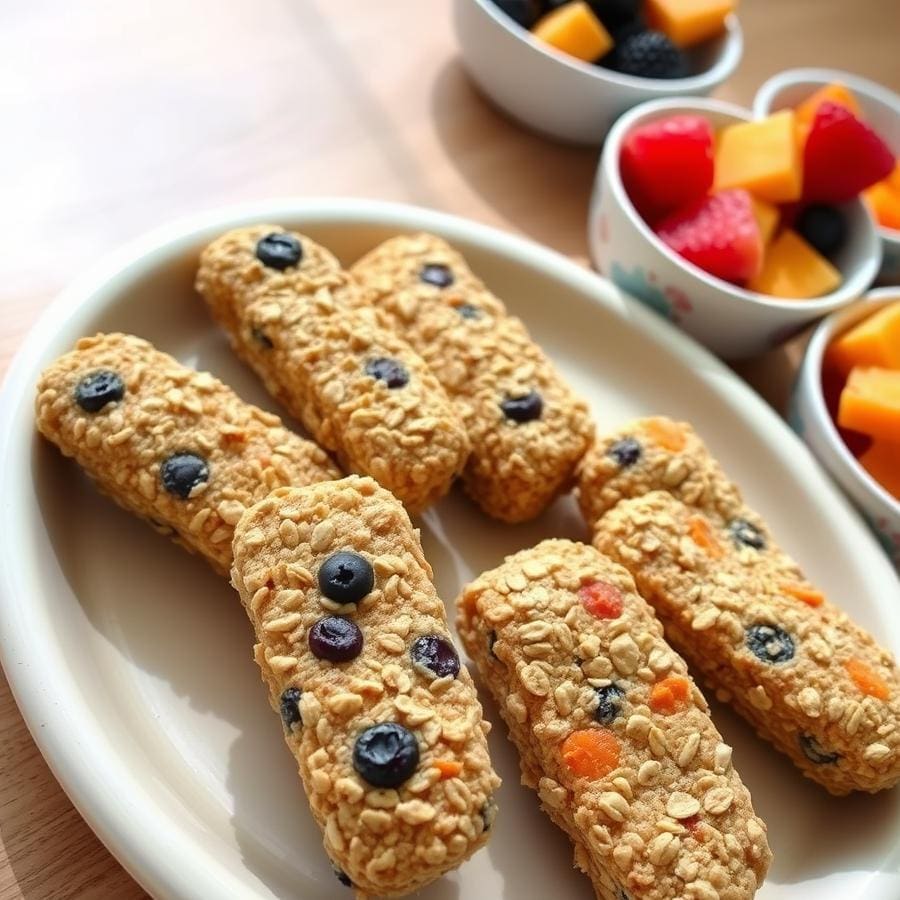
Microwave method (fastest)
- In a cereal bowl, mash about 1/6 ripe banana (roughly 2 tablespoons).
- Stir in 1/4 cup quick oats, 1/4 cup unsweetened fortified soy milk (or water/formula), 1–2 teaspoons hemp hearts, and a pinch of cinnamon if using.
- Microwave on High for about 2 minutes until set at the edges and slightly soft in the center.
- Rest 5–10 minutes to firm up. Slice into 4–6 finger-length strips.
Stovetop method (no microwave)
- In a small nonstick skillet over low heat, spread the mixed batter into a 1/2-inch thick oval.
- Cook 2–3 minutes per side until lightly set and cohesive. Rest 5–10 minutes before slicing.
Serving: Ensure pieces are warm, not hot. The ideal texture is soft, moist, and easily squished between your fingers.
Texture and safety tips from a dietitian
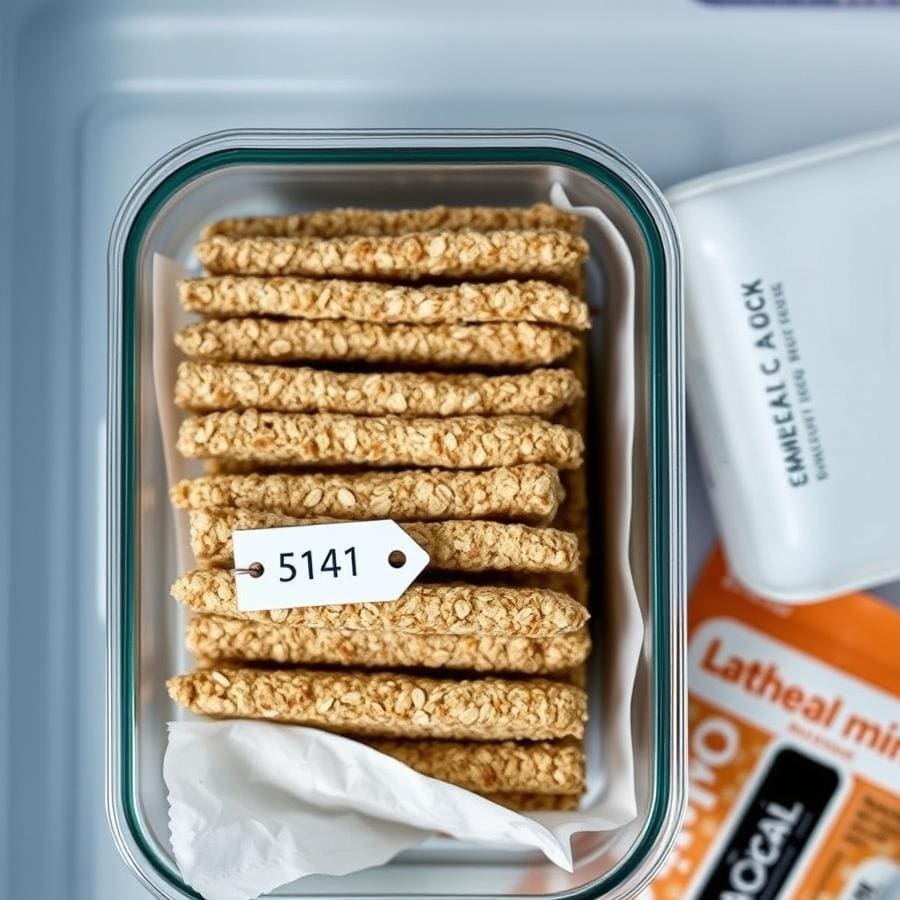
- Do the squish test: The cooked strip should press flat easily between your thumb and forefinger.
- Size for self-feeding: Cut strips roughly the length of your index finger and about 1–2 fingers wide; this helps early grasping.
- Seat and supervision: Feed in a secure, upright highchair. Stay within arm’s reach and avoid distractions.
- Gagging vs. choking: Gagging can be normal as babies learn to manage solids. If you haven’t yet, the American Academy of Pediatrics recommends taking an infant CPR/choking response course.
- Seasoning: Skip added salt and sugar for babies; flavor with gentle spices instead.
- Liquids: Under 12 months, breastmilk/formula remain the primary drinks. Small amounts of fortified plant milk or cow’s milk are fine in recipes but shouldn’t replace breastmilk/formula as a beverage.
- When to introduce: Most babies are ready around 6 months, as the CDC notes, when they can sit with support, show good head and neck control, and bring food to their mouth.
How to store, freeze, and reheat
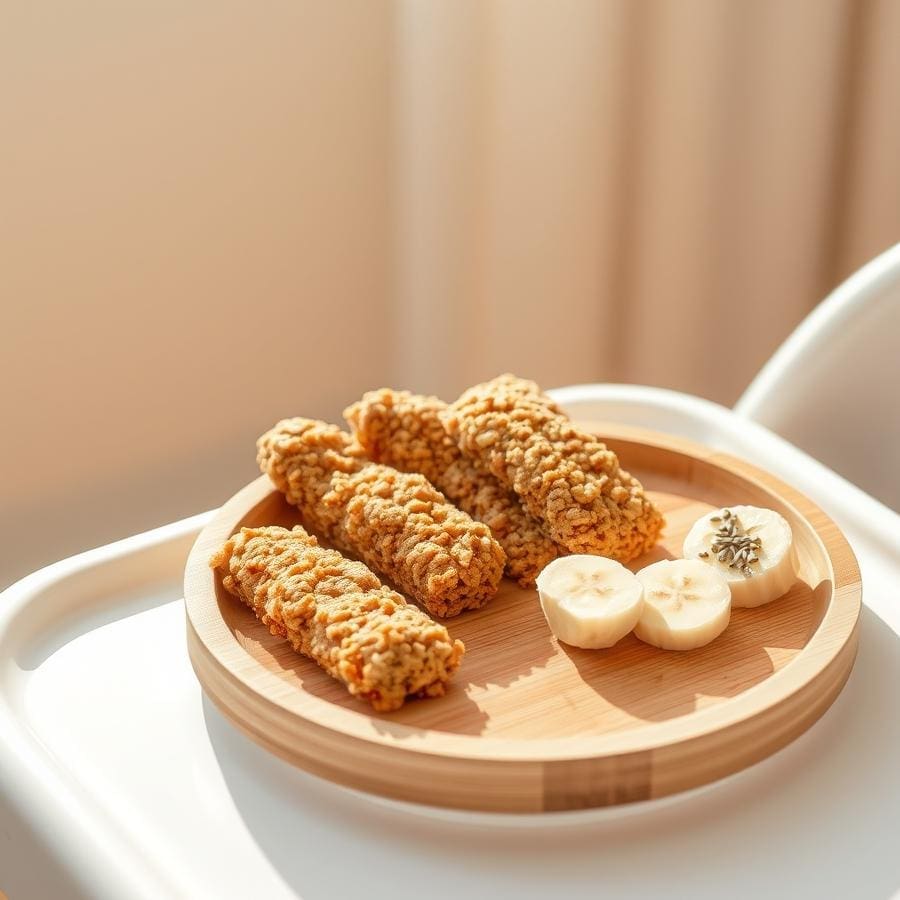
- Refrigerate: Cool completely, then store in an airtight container for up to 3 days. Separate layers with parchment to prevent sticking.
- Freeze: Arrange strips on a parchment-lined tray; freeze until solid, then transfer to a freezer bag for up to 2 months. Label with date and flavor.
- Reheat: Warm gently in the microwave in 10–15 second bursts until just warm. You can also rewarm in a covered skillet over low heat with a teaspoon of water to soften. Always test temperature before serving.
- On-the-go: Pack chilled strips with an ice pack; serve within 2 hours if unrefrigerated or discard.
Simple variations your baby might love

- Blueberry banana: Fold in 1 tablespoon finely chopped blueberries.
- Apple cinnamon: Stir in 1 tablespoon very finely grated apple plus a pinch of cinnamon.
- Peanut butter swirl: Add 1 teaspoon smooth peanut butter if already introduced safely.
- Carrot cake: Finely grated carrot with a tiny pinch of cinnamon and nutmeg.
- Iron boost: Add 1–2 teaspoons iron-fortified infant oat cereal to the mixture and increase liquid slightly.
- Toddler version: Add chia for extra texture or serve with a thin layer of yogurt for dipping if tolerated.
Introduce new ingredients one at a time, especially potential allergens, and offer them earlier in the day when monitoring is easier.
FAQ quick answers
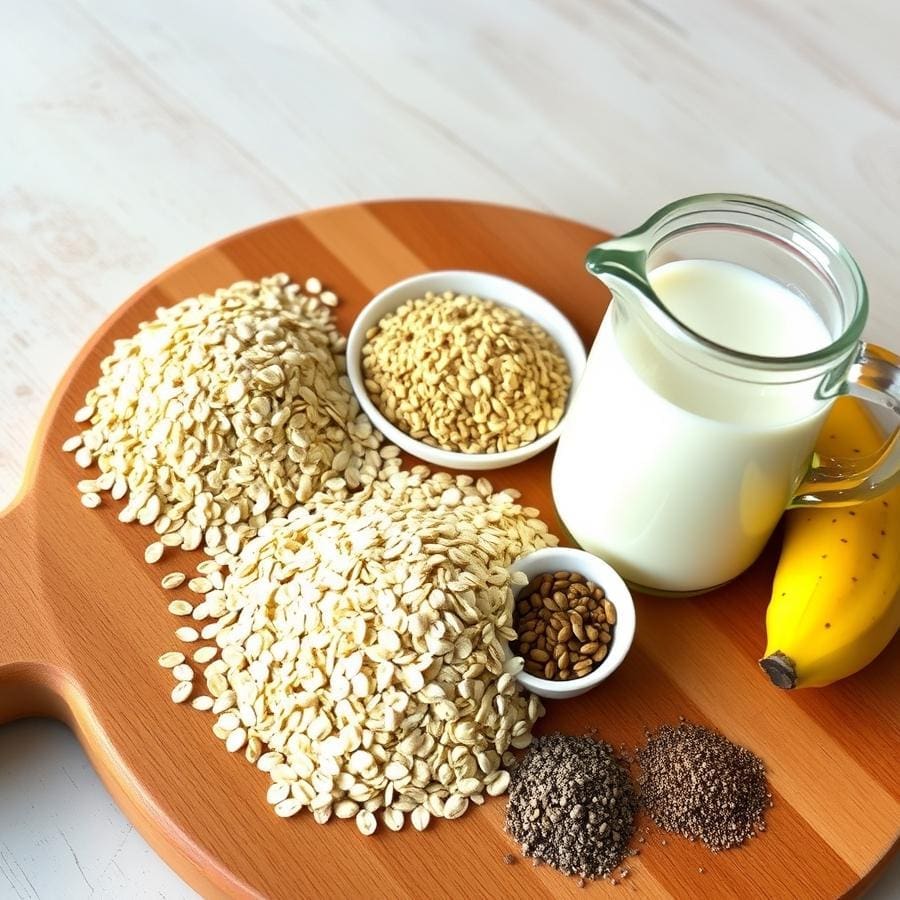
- When can I start offering these? Most babies are ready around 6 months when they can sit with support, have good head control, and show interest in food.
- Can I use regular rolled oats? Yes. Pulse them briefly in a blender or soak in hot liquid for 5 minutes before cooking to improve cohesion.
- Is this safe without eggs or flour? Yes. Banana and oats bind together; resting after cooking helps firm the strips.
- What milk should I use? For under 12 months, use breastmilk or formula as the primary drink. In recipes, unsweetened fortified soy milk, water, or prepared formula work well. Avoid heating breastmilk in recipes to preserve benefits.
- What about allergens like peanut butter? If cleared by your pediatrician and your baby has tried peanut safely, a small swirl of smooth peanut butter is a nutritious option. Introduce allergens one at a time and watch for reactions.
- How big should I cut the strips? About adult finger-length and 1–2 fingers wide to support palmar grasp.
- Do oats contain gluten? Oats are naturally gluten-free but often cross-contact with wheat. Use certified gluten-free oats if needed.
- Can older siblings and adults eat these? Absolutely. Add a drizzle of nut butter or yogurt for older kids and adults; avoid honey for under 12 months.
- Microwaves and baby food—any concerns? Microwaves are safe for cooking; just heat evenly, stir if needed, and always test temperature to avoid hot spots.
Nutrition snapshot per baby serving
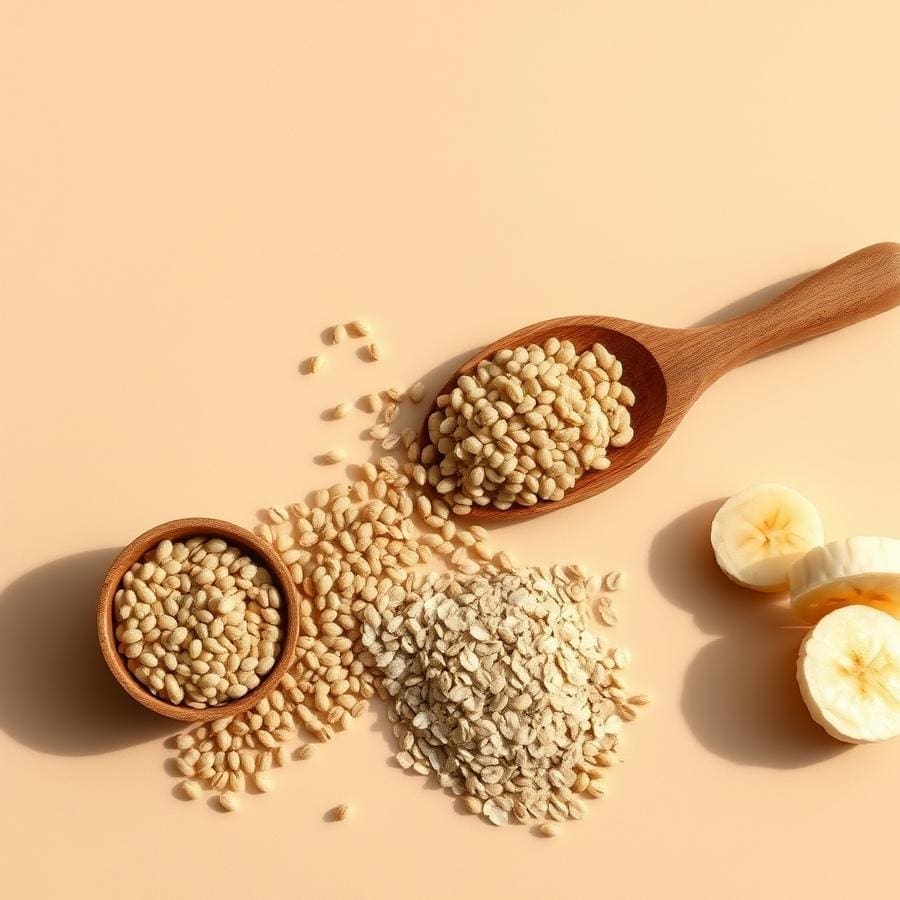
Approximate per serving using quick oats, unsweetened fortified soy milk, 2 teaspoons hemp hearts, and 2 tablespoons banana: 155 calories; 23 g carbohydrate; 7 g protein; 5 g fat; 3 g fiber; 30 mg sodium; 250 mg potassium; 80+ mg calcium; small amounts of iron depending on oats and add-ins. Values vary by brand and substitutions.
Conclusion
With five humble ingredients and a few minutes, you can serve a soft, graspable breakfast that supports self-feeding and real-food flavors. Keep a batch in the fridge or freezer for busy mornings, and customize with simple add-ins as your baby explores new tastes. For another easy meal idea the whole family can enjoy, our crowd-pleasing vegan stuffed shells are a great option.
If you have questions about allergens or readiness, check in with your pediatrician or a registered dietitian for personalized guidance.
